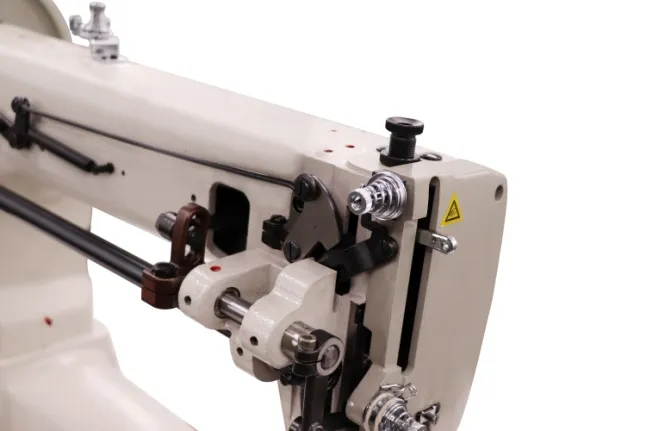Sewing Leather Using a Standard Sewing Machine Techniques and Tips
Sewing Leather with a Regular Sewing Machine
Sewing leather can seem daunting, especially if you are accustomed to working with traditional fabrics. The thickness, stiffness, and unique texture of leather require different considerations and techniques. However, with the right approach, you can comfortably sew leather using a regular sewing machine. In this article, we will explore the essential tips, tools, and techniques you need to get started.
Choosing the Right Leather
The first step in sewing leather is selecting the appropriate type. Leather comes in various forms, from genuine leather to faux leather and suede. Beginners may find working with a thinner leather material, such as lambskin or pigskin, easier to handle than thicker leathers like cowhide. Additionally, consider using faux leather if you're experimenting or looking for a more affordable option. It’s also crucial to ensure you have a clean, blemish-free piece of leather that matches your project’s requirements.
Essential Tools and Equipment
A few specific tools can significantly ease the sewing process. While you can use a standard sewing machine, certain adaptations might be necessary
1. Leather Needle One of the most critical components is the needle. A leather needle features a wedge-shaped tip that pierces the material without tearing it, which is vital when dealing with thick leather. A size 90/14 or 100/16 needle is often recommended for most leather projects.
2. Walking Foot A walking foot attachment can help grip the leather as it moves through the machine, minimizing layer shifting. This is particularly beneficial when working with multiple layers of leather or when you want to ensure straight seams.
3. Teflon Foot If you do not have a walking foot, consider using a Teflon presser foot. This type of foot is designed to glide over the leather surface, reducing friction and preventing the fabric from sticking to the foot and causing uneven stitches.
4. Thread Choose a strong, heavy-duty polyester or nylon thread that can withstand the durability of leather. Regular cotton thread may break or wear out quickly under stress.
5. Cutting Tools Use sharp scissors or a rotary cutter specifically designed for leather. A cutting mat can protect your surfaces and provide a stable cutting area.
Preparing the Leather
sewing leather with regular sewing machine

Before sewing, prepare your leather by measuring and cutting your pieces accurately. Use a ruler and sharp cutting tools to achieve clean edges. Mark any stitching lines lightly with a pencil or tailor’s chalk, ensuring they can be easily removed later. When cutting, consider the grain direction, as this can affect the leather’s appearance and function once sewn.
Techniques for Sewing Leather
Now that you have your materials and tools ready, it’s time to start sewing
1. Testing the Setup Before diving into your project, do a test run on a scrap piece of leather. Adjust the tension, stitch length, and stitch type as necessary. A longer stitch (about 3-4 mm) is generally better for leather, as it ensures a more secure seam and reduces the chances of perforating the leather.
2. Seam Allowance When sewing leather, it’s advisable to use a seam allowance of at least 1/4 inch. This provides enough margin for adjustments and ensures a clean finish.
3. Pinning and Clipping Avoid using pins, as they may leave permanent holes in the leather. Instead, use clips designed for thick materials or double-sided tape to hold pieces in place as you sew.
4. Sewing Technique Take your time when sewing, guiding the leather gently through the machine to maintain control. Avoid pulling or pushing the leather through the feed dogs, as this can create distortions.
Finishing Touches
Once you finish sewing your leather project, use a leather edge tool to smooth and finish the edges. This step is crucial for ensuring a polished and professional look. You may also want to apply a leather conditioner or sealant to protect your work from moisture and wear.
Conclusion
Sewing leather with a standard sewing machine is entirely feasible with the right preparation and tools. By choosing the appropriate leather, using the right needle and foot, and preparing your materials carefully, you can achieve beautiful and durable results. Whether you're making bags, wallets, or other leather goods, embracing this craft can lead to a rewarding and creatively fulfilling experience. Happy sewing!
-
Heavy Duty Leather Sewing Machine: A Must-Have for Professional LeatherworkNewsMay.28,2025
-
Leather Sewing Machine: Essential for High-Quality LeathercraftNewsMay.28,2025
-
Extra Heavy Duty Sewing Machine for Premium Leather ApplicationsNewsMay.28,2025
-
Walking Foot Cylinder Arm Sewing Machine: Precision and Power CombinedNewsMay.28,2025
-
Industrial Cylinder Arm Sewing Machine: Engineered for High-Performance StitchingNewsMay.28,2025
-
Cylinder Bed Sewing Machine: A Powerful Solution for Precision StitchingNewsMay.28,2025
-
Zigzag Sewing MachineNewsMay.12,2025





























